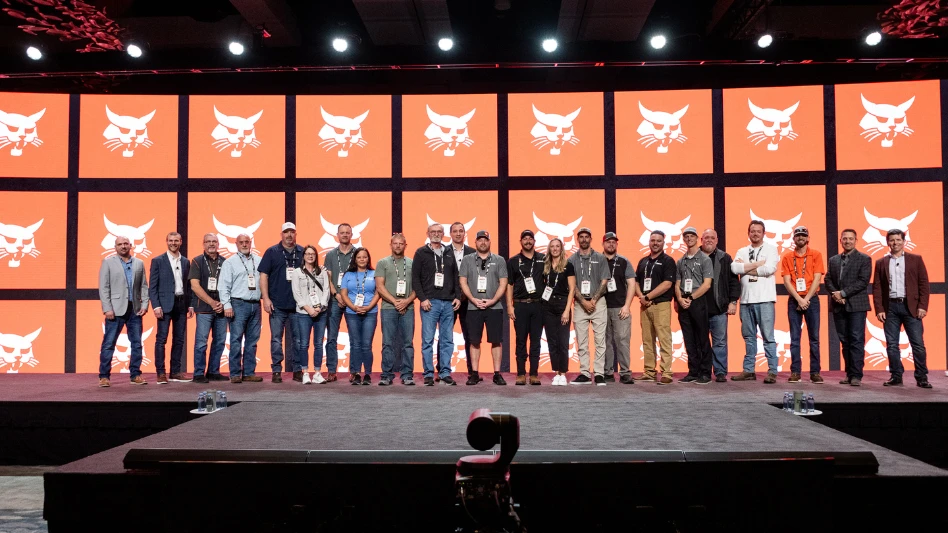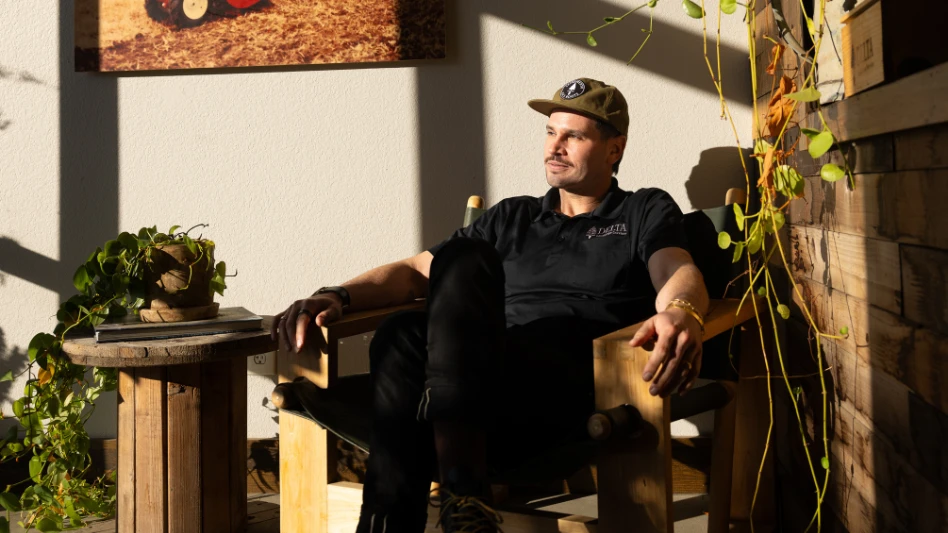“Water gardening today is where lighting was 10 years ago,” says Greg Wittstock, president of Aquascape, Batavia, Ill. “It’s now kind of a fringe, niche market, but the industry will ride the current wave and it will be a standard service in 10 years.”
If Wittstock’s prediction is correct, the water feature industry is in for a wild ride. With significant growth comes change, and with change come trends – both good and bad. The industry will get to observe as designers try to find what works and what doesn’t when it comes to water features, and how to make water feature design and installation as profitable as possible.
Like any up-and-coming segment of business, designers need to be sure to educate themselves and their crews before incorporating water features into their landscape plans. After designers put together a plan “If designers install ponds poorly, it’s going to create the reputation that having a pond is a lot of work,” Wittstock says. “When it comes to water features, not investing in education is the most important thing that can be done wrong.”
With the proper education under their belts, designers can then focus on specific trends, like how big or small water features should be, where on a client’s lawn they should be located and how to make them cutting edge – information that will be important as the industry continues to grow and expand. “Water features just keep becoming more and more popular,” says Kevin Garvey, owner of Garden Design/Build Group, Glenelg, Md. “More people ask for them every year, and I don’t see the demand slowing down any time soon.”
SMALLER SCALE. Today, many designers believe that bigger water features are better. Large-scale projects that are more “ego-gratifying” than “paycheck-gratifying” have left the entry-level customer – and a profitable business opportunity – overlooked. “One of the biggest trends we’re seeing is a backlash toward larger water features and the embracing of smaller features,” Wittstock says. “Some companies have been burned financially on large projects because the work is long and the pay is often slow to come in. We believe there is an untapped market for smaller projects.”
The standard large installation is an 11- by 16-foot pond that costs between $7,000 and $10,000, Wittstock says. Smaller features tend to be pondless, measure 6 by 8 feet and cost between $2,000 and $4,000. While these projects are indeed smaller, they require a lot less labor and materials and tend to have greater profit potential in the future. “Many clients looking to install their first water feature are more willing to spend between $2,000 to $4,000 rather than $7,000 or $8,000,” Wittstock says. “But these small features get a designer’s foot in the door and create potential for people to expand or upgrade in the future.”
Small, pondless features can typically be installed by two or three guys with virtually no equipment in one day, Wittstock says, meaning more of these projects can be completed with half the amount of time and labor. Wittstock and others in the industry are currently trying to create awareness of the profitability of smaller water features by holding seminars and promoting them in industry publications. “We’re trying to dispel the notion that smaller features stifle a designer’s artistic ability,” Wittstock says. “We do the math for these contractors to show them they can do more of these projects at higher profit margins.”
Wittstock says sales of small water features have doubled over the past few years, and their lack of maintenance makes them an easy sell. “People are buying them because there’s no hassle of pond maintenance, but they still get the relaxing sounds and soothing atmosphere larger water features create,” he explains.
To enhance these serene settings, designers are placing water features closer to their clients’ houses or patio areas. Not only does this location allow the client to enjoy the water feature just by stepping out of the door, but it also inspires them to maintain it on a more consistent basis because it’s always within eyeshot.
LARGE AND IN CHARGE. While small water features are being embraced by many first-time clients, large-scale features are still in demand by veteran, high-end customers. Certain emerging trends are making it easier for designers to achieve the “wow factor” of large-scale installations. One of these trends is synthetic rock. Garvey utilizes these rocks, which are cast from real boulders, to create natural-looking designs. “Using synthetic rock enables us to cut and paste the design, so to speak,” he says. “We can build features that would normally take thousands of heavy rocks quicker and easier.” The use of large-scale boulders makes the design look more natural than “little gravel mixtures,” Garvey says.
This is important, he adds, as clients are asking for water features that look as natural as possible. Another way this natural look can be achieved is by building water features into a natural slope rather than creating a slope to build the feature into. “It just looks more natural,” Garvey says. “I think not doing this is one of the biggest mistakes designers and architects can make.”
For example, one of Garvey’s Virginia-based clients wanted a water feature built into his swimming pool. Garvey designed the feature into a natural hill and the waterfall spilled over into the pool
Garvey says that the combination of water features and swimming pools that look like natural ponds is going to be one of the biggest industry trends in the coming years.
Although water feature-pool combos can have beautiful results, there are a few things to avoid. “I’ve had clients want their pools to look so natural that they’ve asked to add aquatic plants like water lilies and lotus flowers to them,” he says. “This can be problematic because you need different types of filters for plants and fish than you do for humans. I prefer to keep them separate.” Garvey says his business of blending water features and swimming pools had doubled since last year.
Another trend in large installations is having more than one design firm team up to get them done, Wittstock says. These companies often meet via industry resources like online message boards. By collaborating, companies are able to split the cost of resources, sharing the financial liability. These firms then split the profit appropriately after the job is done. “This became really common this past year and will continue to be this common year,” Wittstock says. “Many companies don’t want to take on huge jobs that could sink their company if something goes wrong. This is a way to mitigate that risk.”
EASY DOES IT. As water feature installation picks up as a service, Wittstock suggests that designers work with contractors to develop a system with which to complete each job. Building a solid partnership helps keep the project on an organized schedule and prevents bumps in the road.
“Landscape contractors have systems for installing everything from patios to retaining walls,” he says. “Just because water features are creative and artistic doesn’t mean they can’t be completed while following a system. Without organization, each job will be a headache.”
The lack of a systematic approach results in unnecessary hassles and poor customer service, which are two things that every landscape contractor and designer wants to avoid, Wittstock adds.
The availability of more distributors is another trend that will simplify the ability for designers to add water feature design and installation to their businesses. This gives them greater access to more products, which alleviates the need to “jump through hoops” to find the necessary materials to get the job done. “In the very near future, designers will have the luxury of more distributors in their areas,” Wittstock says. “Having the necessary products on location will help fuel the future demand of water feature installation.”

Explore the May 2007 Issue
Check out more from this issue and find your next story to read.
Latest from Lawn & Landscape
- Coxreels expands V-100 Series product line
- Landscape Workshop expands with 2 acquisitions
- Wilson360 adds Daniel Grange as new consultant
- Batman and business
- CH Products releases new tree stabilizer
- Savannah Bananas founder Jesse Cole to speak at Equip Exposition
- Catch up on last year's Benchmarking report
- Davey Tree promotes Kevin Marks as VP of Western operations





